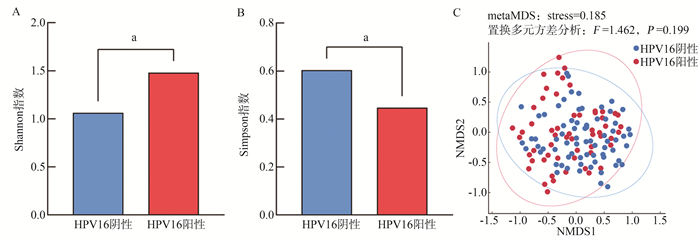| [1] |
Sung H, Ferlay J, Siegel RL, et al. GLOBAL cancer statistics 2020: globocan estimates of incidence and mortality worldwide for 36 cancers in 185 countries[J]. CA Cancer J Clin, 2021, 71(3): 209-249. DOI: 10.3322/caac.21660.
|
| [2] |
Stratton P, Battiwalla M, Tian X, et al. Immune response following quadrivalent human papillomavirus vaccination in women after hematopoietic allogeneic stem cell transplant: a nonrandomized clinical trial[J]. JAMA Oncol, 2020, 6(5): 696-705. DOI: 10.1001/jamaoncol.2019.6722.
|
| [3] |
Wong AK, Chan RC, Nichols WS, et al. Human papillomavirus (HPV) in atypical squamous cervical cytology: the Invader HPV test as a new screening assay[J]. J Clin Microbiol, 2008, 46(3): 869-875. DOI: 10.1128/JCM.01424-07.
|
| [4] |
Castle PE, Solomon D, Schiffman M, et al. Human papillomavirus type 16 infections and 2-year absolute risk of cervical precancer in women with equivocal or mild cytologic abnormalities[J]. J Natl Cancer Inst, 2005, 97(14): 1066-1071. DOI: 10.1093/jnci/dji186.
|
| [5] |
Kaambo E, Africa C, Chambuso R, et al. Vaginal microbiomes associated with aerobic vaginitis and bacterial vaginosis[J]. Front Public Health, 2018, 6: 78. DOI: 10.3389/fpubh.2018.00078.
|
| [6] |
Norenhag J, Du J, Olovsson M, et al. The vaginal microbiota, human papillomavirus and cervical dysplasia: a systematic review and network meta-analysis[J]. BJOG, 2020, 127(2): 171-180. DOI: 10.1111/1471-0528.15854.
|
| [7] |
Cohen PA, Jhingran A, Oaknin A, et al. Cervical cancer[J]. Lancet, 2019, 393(10167): 169-182. DOI: 10.1016/S0140-6736(18)32470-X.
|
| [8] |
李俐, 丁玲, 吕元婧, 等. 阴道微环境改变与HPV16感染在宫颈上皮内瘤变中的作用及其交互效应[J]. 中华流行病学杂志, 2018, 39(11): 1486-1490. DOI: 10.3760/cma.j.issn.0254-6450.2018.11.013.Li L, Ding L, Lyu YJ, et al. Interaction between vaginal micro-environment alterations and HPV16 infection in cervical intraepithelial neoplasia[J]. Chin J Epidemiol, 2018, 39(11): 1486-1490. DOI: 10.3760/cma.j.issn.0254-6450.2018.11.013.
|
| [9] |
Di Paola M, Sani C, Clemente AM, et al. Characterization of cervico-vaginal microbiota in women developing persistent high-risk Human Papillomavirus infection[J]. Sci Rep, 2017, 7(1): 10200. DOI: 10.1038/s41598-017-09842-6.
|
| [10] |
Mitra A, MacIntyre DA, Ntritsos G, et al. The vaginal microbiota associates with the regression of untreated cervical intraepithelial neoplasia 2 lesions[J]. Nat Commun, 2020, 11(1): 1999. DOI: 10.1038/s41467-020-15856-y.
|
| [11] |
Wei ZT, Chen HL, Wang CF, et al. Depiction of vaginal microbiota in women with high-risk human papillomavirus infection[J]. Front Public Health, 2020, 8: 587298. DOI: 10.3389/fpubh.2020.587298.
|
| [12] |
Brotman RM, Shardell MD, Gajer P, et al. Interplay between the temporal dynamics of the vaginal microbiota and human papillomavirus detection[J]. J Infect Dis, 2014, 210(11): 1723-1733. DOI: 10.1093/infdis/jiu330.
|
| [13] |
Santiago GL, Deschaght P, El Aila N, et al. Gardnerella vaginalis comprises three distinct genotypes of which only two produce sialidase[J]. Am J Obstet Gynecol, 2011, 204(5): 450. e1-e450, e4507. DOI: 10.1016/j.ajog.2010.12.061.
|
| [14] |
Chen Y, Qiu X, Wang W, et al. Human papillomavirus infection and cervical intraepithelial neoplasia progression are associated with increased vaginal microbiome diversity in a Chinese cohort[J]. BMC Infect Dis, 2020, 20(1): 629. DOI: 10.1186/s12879-020-05324-9.
|
| [15] |
Robinson JW, Dando SJ, Nitsos I, et al. Ureaplasma parvum serovar 3 multiple banded antigen size variation after chronic intra-amniotic infection/colonization[J]. PLoS One, 2013, 8(4): e62746. DOI: 10.1371/journal.pone.0062746.
|
| [16] |
Moodley J, Constant D, Mwaka AD, et al. Mapping awareness of breast and cervical cancer risk factors, symptoms and lay beliefs in Uganda and South Africa[J]. PLoS One, 2020, 15(10): e0240788. DOI: 10.1371/journal.pone.0240788.
|
| [17] |
Farr Zuend C, Noël-Romas L, Hoger S, et al. Influence of dapivirine vaginal ring use on cervicovaginal immunity and functional microbiome in adolescent girls[J]. AIDS, 2021, 35(3): 369-380. DOI: 10.1097/QAD.0000000000002751.
|
| [18] |
Gonzalez PS, O'Prey J, Cardaci S, et al. Mannose impairs tumour growth and enhances chemotherapy[J]. Nature, 2018, 563(7733): 719-723. DOI: 10.1038/s41586-018-0729-3.
|
| [19] |
Loftus RM, Assmann N, Kedia-Mehta N, et al. Amino acid-dependent cMyc expression is essential for NK cell metabolic and functional responses in mice[J]. Nat Commun, 2018, 9(1): 2341. DOI: 10.1038/s41467-018-04719-2.
|





 下载:
下载:




